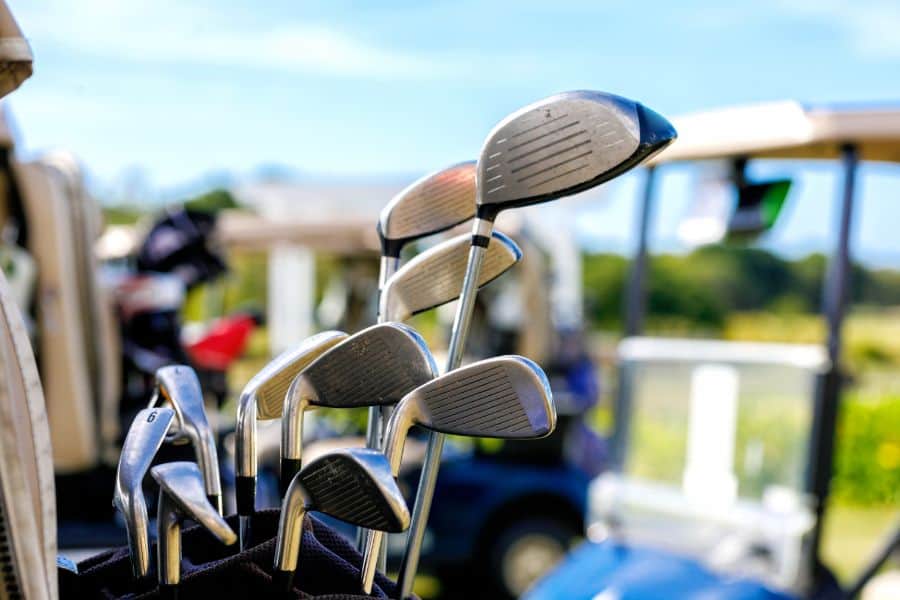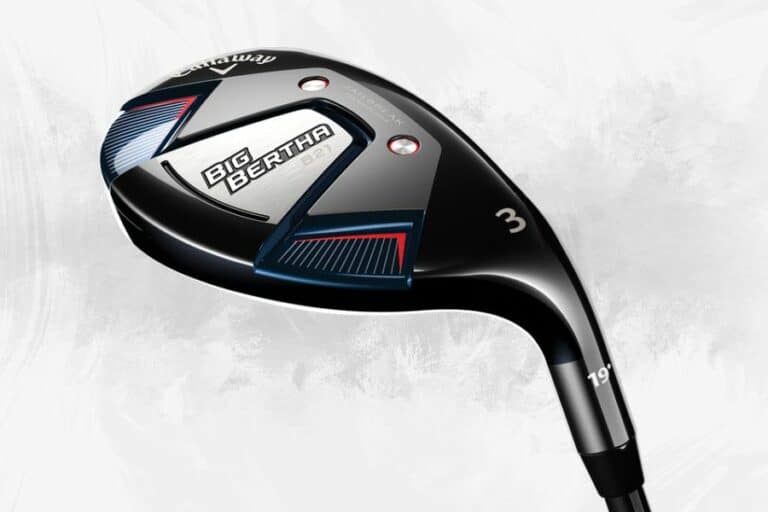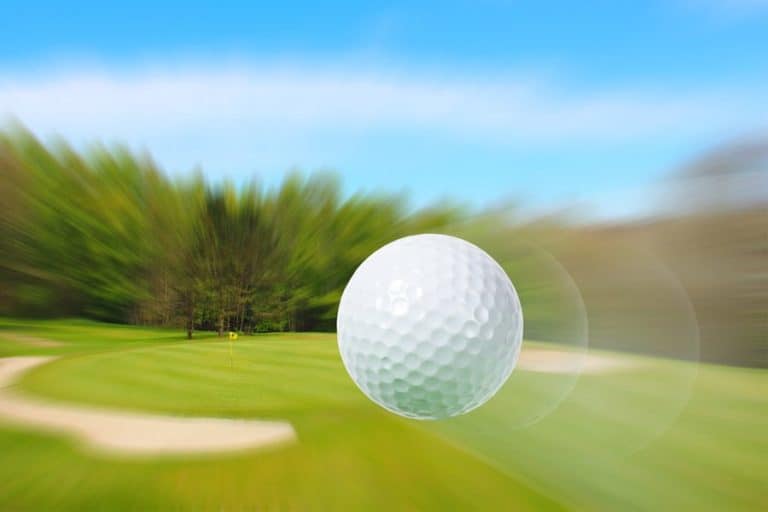How Golf Clubs Are Made?

Discover the process behind golf club design and construction. This article explores how golf clubs are made and how technology has improved over the years.
Golf is one of the oldest sports in the world. While the popularity of the game has changed over the years, one thing that has remained constant is the need for quality golf clubs.
There are 5 different types of golf clubs, each designed for a specific purpose. With the evolution and advancements in technology, the quality of golf clubs has come a long way in design and construction.
Parts of golf clubs and materials used
Golf equipment manufacturers have constantly pushed boundaries since the beginning of the game to design clubs for maximum performance. Wood was expensive and fragile in the first generation, but the introduction of steel and titanium clubs altered the trajectory of the game.
1. Club heads
Historically, golf club heads were crafted from materials such as beech, dogwood, apple, or pear. However, by the 1900s, forged iron clubs began to emerge, and by the 1980s, metal became the preferred material, even for wood.
Nowadays, club heads are typically made from lightweight metals like steel or titanium, enabling the golf ball to bounce off the club face and increase the head speed.
Some drivers also incorporate a composite material made from carbon fibers, allowing for a lightweight but strong club head to be strategically weighted for enhanced distance.
2. Grips
Initially, golf club grips were made of leather strips wrapped around the shaft. Nowadays, leather outer grips are used on custom clubs and putters, while wrap-style grips are utilized for personalized diameters and textures.
In contrast, golf clubs sold in the market usually come with a one-piece rubber grip that handles moisture well and offers a consistent grip.
The rubber grip comes in different thicknesses and textures, allowing golfers to customize their grips. Some golfers, however, prefer the sensation of an outer wrap of leather or synthetic leather sleeve, which usually have a synthetic base to enhance grip.
3. Shafts
Earlier, golf club shafts were constructed from different types of wood, such as ash, orangewood, and hickory. Out of these three kinds of wood, hickory became popular in the mid-1800s.
In the 20th century, PING developed laminated woods for increased shaft strength, marking a significant innovation in shaft construction.
Nowadays, shafts on “woods” are primarily made of graphite or titanium composites, which offer different club weights and flexes. Meanwhile, shafts on “irons” are made from steel alloys that allow for cavity designs to lower the center of mass, making the club easier to hit.
The golf club-making process
Although golf clubs may appear simple, creating a high-quality club is complex. A golf club manufacturer typically uses either casting or forging to produce a golf club head. After creating the head, it is attached to the shaft and finished with the appropriate grip before delivery.
Casting process
The casting process of golf clubs requires a wax injection molding machine. The process involves creating wax molds, which are then melted onto a wax tree and coated with quicksand. This helps form a shell around the wax club heads, which are then filled with molten steel.
After removing the quicksand shell, the unpolished club heads are exposed and undergo a finishing process, including polishing and sandblasting. Quality assurance tests are performed on the club heads to ensure they meet the golf club designers’ specifications before they are painted with logos and score lines by skilled workers.
Forging process
During the forging process, the mild iron cylinder is heated to 1200°C to maintain its chemical integrity for the head, and every club head is carefully shaped into its initial rough form.
The edges are trimmed, and the rough head is precisely pounded with the forging hammer to create the molecular structure of the head. The head is hit a third and fourth time to define it and prepare for score lines and artwork stamping.
The hosel cylinder is spin-welded onto the head precisely to ensure exact lofts and lies, and every raw and advanced head is now ready for finishing by Master Craftsmen. Grinding and polishing are done to reach the designated weight for each iron, with 4-gram increments between them for tight swing weight matching.
Final polishing is done in a specialized barrel capable of producing various finishes, plating is then applied, and the face is lightly sandblasted with chrome taped over it.
What golf clubs are made in the United States?
Golf is a popular sport in the United States, and there are many American-Made Golf Clubs. Here are some of the top golf club brands that are made in the United States:
1. TaylorMade
In 2022, CENTROID Investment Partners acquired TaylorMade golf clubs after the company underwent several takeovers and acquisitions. Although the TaylorMade golf clubs are assembled in the USA, their parts are manufactured in China.
2. Titleist
Titleist is an all-American brand that produces golf clubs, equipment, and apparel in the USA. Its headquarters are in New Haven, Massachusetts, where it also manufactures golf balls. While most Titleist golf clubs are made in Carlsbad, California, research shows that its irons are forged in Japan, finished in China, and then assembled in the USA.
3. Callaway
Approximately 40% of Callaway golf clubs for North and Latin America are assembled in their Carlsbad, California facility, while all components and other equipment, including apparel, are manufactured in China.
The remaining 60% of the assembly is completed in Asia for global distribution. Callaway recently moved its assembly operations from Carlsbad to Monterey, Mexico, while distribution has been outsourced from Carlsbad to Dallas.
However, Callaway will still keep its club assembly and distribution capabilities in Carlsbad.
4. Ping
Ping moved its manufacturing facilities to China. It is unclear where the irons and drivers are assembled, but the performance remains top-notch. However, it is evident that the original manufacturing facility in Phoenix is still operational, and all Ping putters are assembled there. The plant has a deep history with the legendary Ping Anser range, which has won over 500 major tournaments.
5. Cobra
Cobra golf club components originate from Asia, and the Carlsbad, California plant is solely used for assembly. The brand is a subsidiary of Puma SE, a German-based company. Cobra gained fame through their use of graphite shafts and oversized iron heads.
6. Wilson
Wilson golf clubs have been mass-produced in Tullahoma, Tennessee, which has been the brand’s primary manufacturing location for years. However, to remain competitive, Wilson has most likely outsourced club components from Asia like many other golf club manufacturers.
Currently, there are ongoing takeover talks between Wilson and a Chinese-owned sporting goods company. If the acquisition were to happen, it could potentially lead to a significant shift in the production and distribution of Wilson golf clubs.
Nevertheless, Wilson has built a reputation as a reliable brand, providing high-quality golf clubs, and its products have been used by many professional players over the years.
7. Tour edge
Tour Edge is a US-based golf club manufacturer that produces clubs under three different brands. The Exotics range is their flagship brand and is used by professional players on the PGA Tour.
The Hot Launch range, handcrafted in the USA plant in Batavia, Illinois, offers game-improvement sets for players looking to lower their handicap. Meanwhile, the Bazooka range is the entry-level option for new players.
Tour Edge is one of the few golf club manufacturers that offer a lifetime guarantee on their products, a testament to their commitment to producing high-quality clubs.
Their founder and current owner, David Glod, prioritizes investing in materials over marketing, which reflects in their products’ quality. Their Hot Launch clubs, in particular, cater to players looking for game improvement, making Tour Edge a popular choice among golf enthusiasts.
8. PXG golf clubs
PXG (Parsons Xtreme Golf) was founded in 2015 by Bob Parsons with the goal of producing the best golf clubs available. The company is headquartered in Scottsdale, Arizona, and manufactures its clubs in the USA, using only supreme materials and innovative technologies to meet high standards in performance and quality.
Are golf clubs magnetic?
Golf clubs, except for drivers with titanium heads, are primarily made of various types of steel, making them magnetic due to the presence of iron. Stainless steel, which includes iron, nickel, and chromium, is commonly used in golf clubs.
Some products allow golfers to pick up their clubs using magnets. However, shafts made from titanium, graphite, or carbon fiber are not magnetic.
Conclusion
Golf clubs are generally made from a variety of materials, with steel being the most common. Many golf club manufacturers have outsourced components from Asia, but the USA is still a major player in the market.
With ever ending need for improvement, golf club manufacturers are constantly working on improving the designs and performance of their clubs. Regardless of the materials used or the brand selected, golfers should ensure that their clubs fit their playing style for optimal performance.








